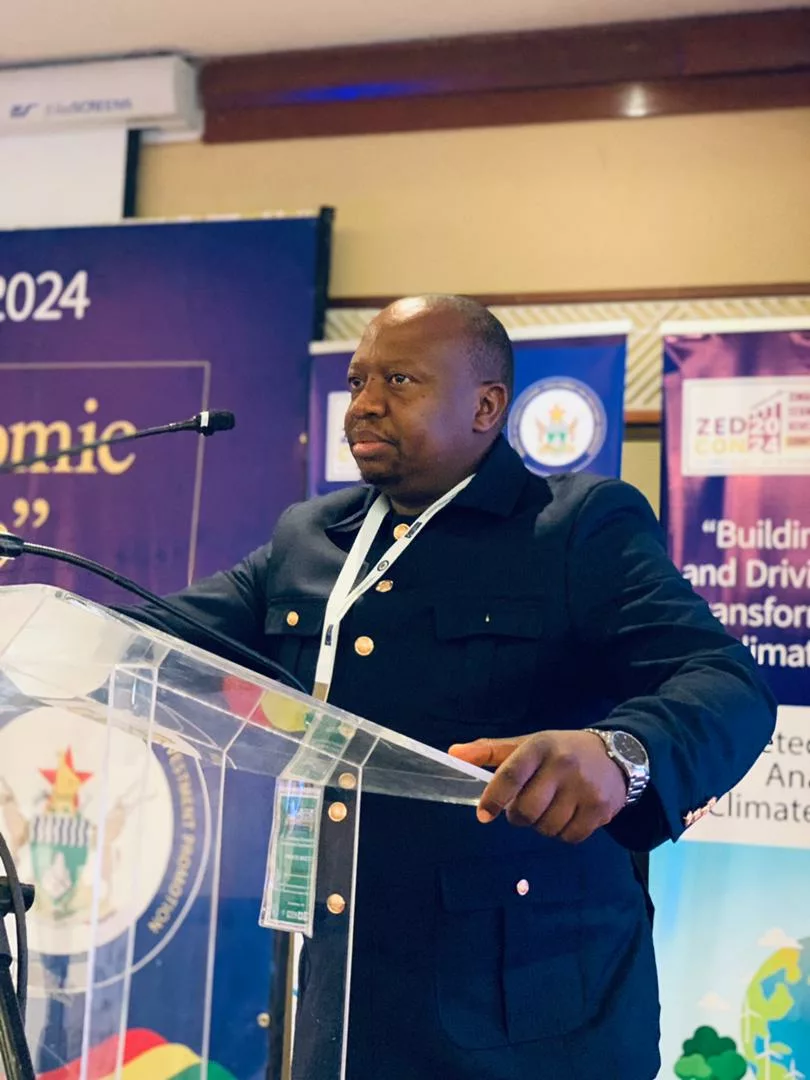|
Getting your Trinity Audio player ready...
|
Writes Alfred Mazungunye
In the realm of strategic thinking and visionary leadership, there are rare moments that stand out as transformative milestones, shaping the course of a nation’s destiny. In the next few days, mark one such momentous occasion as Dr. Tinashe Muzamhindo unveils his magnum opus, the much-anticipated book titled “Vision 2030 Manual.”
This literary marvel promises to be a beacon of enlightenment, guiding Zimbabwe towards a future of prosperity and progress. This publication comes at a time when President Mnangagwa calls for a high level of expertise towards the attainment of the much-awaited Vision 2030. It took one of the few talented Zimbabweans to come up with a magnum opus idea to compile such a highbrowed intellective inventive phrenic publication towards the national discourse.
Within the pages of this enlightening tome lie the blueprints for a reinvigorated Zimbabwe, brimming with potential and promise. The manual transcends mere rhetoric, delving deep into the core principles of structured development planning, coordination, monitoring and evaluation systems, and a clear implementation framework. Chapters such as “Guidelines of Effective Strategic Planning, Result Based Monitoring Systems Approach, Strong Institutions, Strategic Coordination and Implementation” and “Fostering Strategic Change and Leading Innovation” serve as pillars of strength, anchoring Zimbabwe’s journey towards achieving Vision 2030.
Let us concisely delve into some of these chapters and explore their significance for Zimbabwe’s economy and the achievement of Vision 2030.
Structured Vision: A nation without a clear vision is like a ship without a compass. The manual emphasizes the importance of having a structured vision that outlines the desired future for Zimbabwe. This chapter provides a roadmap for aligning national goals and aspirations, ensuring that every effort is aimed towards a common objective. Structured Development Plan: A vision without a plan is merely a wish. In this chapter, he highlights the need for a well-defined and comprehensive development plan. Outlining specific goals, strategies, and timelines will enable Zimbabwe to effectively channel its resources towards achieving sustainable development.
Clear Planning Alignment: Successful execution of any plan requires alignment and coordination. The Book emphasizes the importance of aligning planning efforts across various sectors and stakeholders. This chapter provides practical guidance on fostering collaboration and synergy, ensuring that everyone is working towards a shared goal.
Clear Coordination Framework: Building on the previous chapter, the tome delves deeper into the intricacies of coordinating efforts across multiple sectors. He provides insights on establishing a clear coordination framework that brings together government institutions, private sector entities, and civil society organizations. This framework enables effective communication, collaboration, and resource allocation.
Establishment of Planning Structures towards a coordinated framework and approach: A dedicated institution for strategic planning is crucial for the success of any nation. The writer advocates for the establishment of a National Planning Commission in Zimbabwe. This chapter outlines the functions and responsibilities of such a commission, emphasizing its role in driving sustainable development and ensuring accountability.
Developing a clear comprehensive roadmap: Zimbabwe possesses a diverse range of industries with untapped potential. This chapter explores strategies for fostering growth and competitiveness in key industries such as agriculture, mining, manufacturing, and tourism using a clear roadmap evolved around a national planning framework. Leveraging the unique strengths of each sector allows Zimbabwe to unlock its economic potential and create employment opportunities for its people.
Strong Institutions: A well-functioning economy requires a robust framework towards strong institutions. The Vision 2030 manual proposes a raft of measures around state entities and parastatals for them to be aligned with the national mandate. The framework takes into account the unique challenges and opportunities in Zimbabwe. This chapter explores strategies for putting a valve on leakages and strengthening institutions with a clear framework promoting innovation, creativity, transparency, and accountability as well as putting the correct people in strategic key areas of governance.
Comprehensive Debt Clearance Strategy: Zimbabwe’s debt burden has long been a hindrance to its economic progress. The tome presents a comprehensive strategy for clearing the country’s debt and regaining financial stability. This chapter offers practical solutions for managing debt, negotiating favorable terms with creditors, and ensuring sustainable fiscal policies.
The significance of Dr. Muzamhindo’s advisory role cannot be overstated, for he is not merely a writer but a visionary architect of development. His commitment to seeing Zimbabwe prosper is a testament to his unwavering dedication and unyielding determination. Through the establishment of the Zimbabwe Institute of Strategic Thinking (ZIST), he has carved a path towards a united and prosperous Zimbabwe, where structured development plans and industry growth strategies pave the way for a brighter tomorrow.
As we delve into the depths of his transformative vision 2030 manual, we are met with a tapestry of insights and wisdom that illuminate the path ahead. The chapters present a blueprint for sustainable economic measures and guidelines for the attainment of the upper-middle-class economy by 2030. Each chapter is a testament to his strategic acumen and his unwavering belief in Zimbabwe’s potential to rise above its challenges.
Dr. Muzamhindo’s journey from the establishment of ZIST to the present day is a testament to the power of perseverance and resilience in the face of adversity. Like a modern-day trailblazer, he has defied skeptics and critics, forging ahead with unwavering determination and an unshakable belief in the transformative power of strategic thinking. His tireless efforts have not only shaped the landscape of Zimbabwe’s development discourse but have also inspired a new generation of leaders to dream, aspire, and achieve.
As we stand on the cusp of this historic manual launch, let us reflect on the profound impact of his visionary leadership and unyielding determination. His commitment to a better and united Zimbabwe is a clarion call to action, urging us to embrace the transformative power of strategic thinking and structured development planning. Let us rally behind his vision, for in his words and wisdom lies the promise of a brighter future for Zimbabwe and its people.
Alfred Mazungunye is a researcher and freelance journalist. He writes in his personal capacity.






